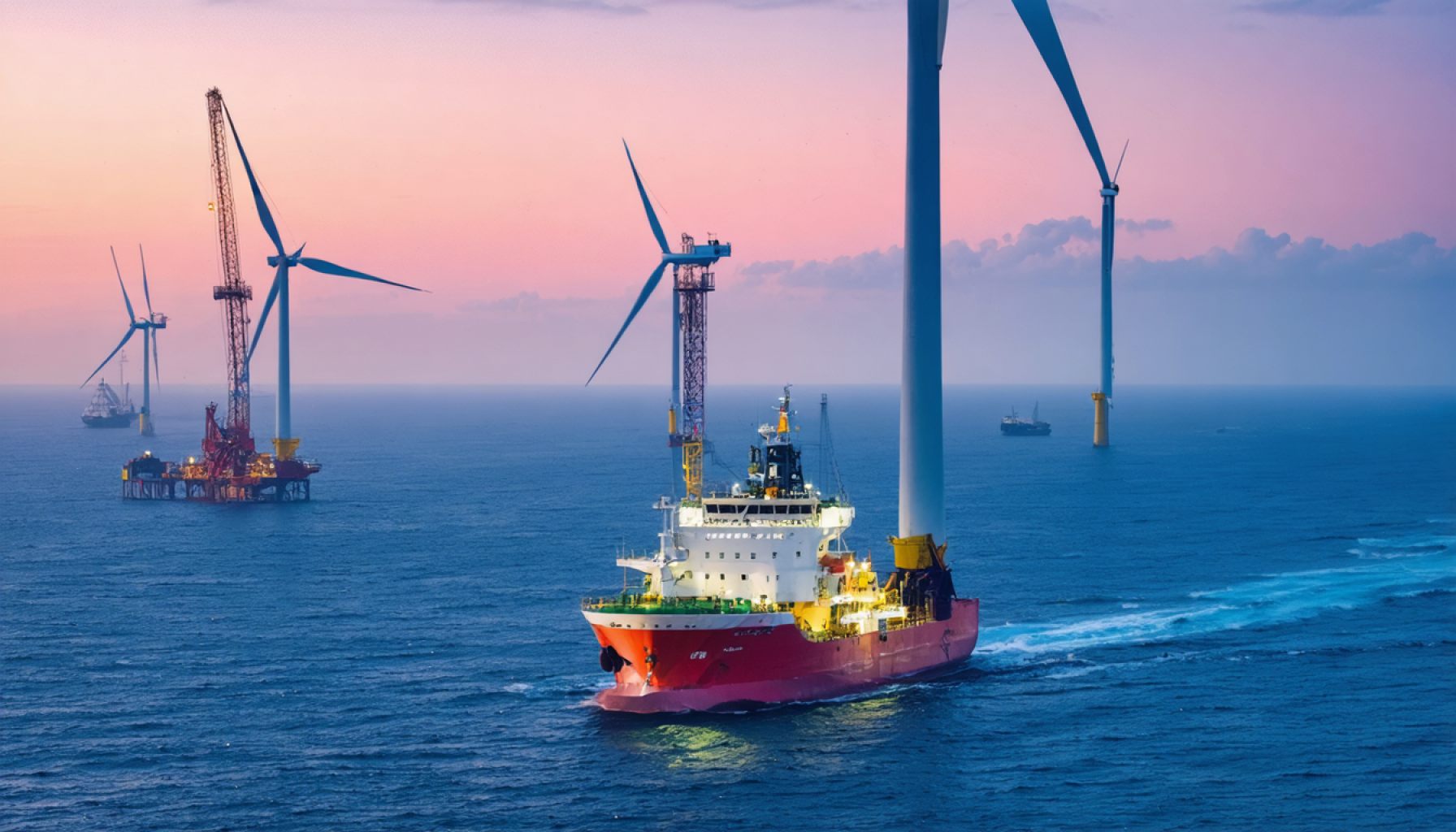- Ørsted’s Hornsea project is a leader in offshore wind innovation, with Hornsea 2 being the world’s largest offshore wind farm.
- Ørsted’s upcoming expansions include the Hornsea 3 and 4 projects, set to significantly boost renewable energy capacity by 3,480 MW.
- These projects are part of the UK’s strategic push towards energy security and economic rationality, leveraging maritime advantages.
- The Dogger Bank Wind Farm, a collaboration between SSE Renewables and Equinor, aims for an 8.1 GW capacity, advancing the UK’s renewable leadership.
- Offshore wind is a key pillar in reducing carbon emissions and supporting economic transition, offering scalable and cost-effective electricity.
- The developments highlight a global shift towards sustainable energy, with offshore wind at the forefront of future energy landscapes.
Giant blades slice through the relentless North Sea winds, transforming air currents into energy where sea meets sky. This dramatic vista is where Ørsted’s Hornsea project, a pioneering force in offshore wind innovation, continues to redefine boundaries. With Hornsea 1 and 2 already operational, the latter stakes its claim as the world’s largest offshore wind farm, a testament to engineering prowess and renewable ambition.
2024 heralds another leap forward as Ørsted secures pivotal contracts, signaling the green light for the Hornsea 3 Offshore Wind Farm’s 1,080 MW expansion and a monumental 2,400 MW push for Hornsea 4. These projects, approved by the UK Department for Energy Security and Net Zero, cement the UK’s leadership in leveraging its natural maritime advantages to harness sustainable energy.
The essence of these developments lies not just in their sheer magnitude but in their promise of energy stability and economic sense. Duncan Clark, leading the UK & Ireland charge at Ørsted, underscores this point with unwavering conviction. Offshore wind, he affirms, forms the cornerstone of the UK’s energy security strategy, offering a scalable and cost-effective electricity solution, a beacon of hope for bill payers across the nation.
This wave of innovation isn’t cresting alone. In parallel, the Dogger Bank Wind Farm takes shape, backed by the formidable partnership of SSE Renewables and Equinor. At a staggering planned capacity of 8.1 GW, this venture further propels the UK into the vanguard of renewable energy, reinforcing a commitment to reduce carbon footprints while fueling an economy in transition.
In these fields of wind and water, energy potential unfolds with profound promise. What emerges is not only a boon for the environment but a clarion call for worldwide energy paradigms, urging others to follow suit in this vital shift towards sustainability. The key takeaway: renewables, with offshore wind at the helm, are steering the future—ensuring a cleaner, resilient energy landscape.
The Future is Wind-Powered: How Offshore Wind Farms Like Hornsea Are Reshaping the Energy Landscape
Introduction
The offshore wind industry is rapidly redefining the renewable energy landscape, with Ørsted’s Hornsea project leading the charge. As the largest operational offshore wind farm, Hornsea 2 sets a new standard in engineering and renewable ambition. Projects like these not only highlight technological innovation but also underline the economic and environmental promise of wind energy.
Additional Insights and Future Trends
1. Economic Impact and Job Creation: Offshore wind projects bring substantial economic benefits, including job creation in construction, maintenance, and operations. According to the UK government, the offshore wind sector could support up to 60,000 jobs by 2030, with opportunities in both coastal regions and beyond.
2. Advanced Technology in Offshore Wind: Modern offshore wind farms utilize cutting-edge technology, such as floating turbines and advanced data analytics for site selection and operations. These innovations improve efficiency and reduce costs, making offshore wind increasingly viable.
3. International Expansion: Countries like the United States, China, and several European nations are expanding their offshore wind capabilities. For instance, the Biden administration aims to deploy 30 GW of offshore wind energy by 2030 as part of its climate agenda.
4. Challenges and Limitations: Despite the potential, offshore wind farms face challenges such as environmental impacts on marine ecosystems, logistical hurdles of installation in harsh environments, and high initial investment costs.
5. Market Forecasts: The global offshore wind market is projected to grow at a compound annual growth rate (CAGR) of over 15% from 2021 to 2028, driven by increased investment in renewable energy and supportive government policies.
How-To Steps & Life Hacks: Investing in Wind Energy
1. Research the Market: Understand the dynamics of the wind energy market and identify key players, like Ørsted, SSE Renewables, and Equinor.
2. Evaluate Investment Options: Consider investing in renewable energy ETFs or stocks of companies partaking in offshore projects for exposure to this booming sector.
3. Stay Informed: Keep up with industry trends and government policies that may impact the profitability of wind energy initiatives.
Real-World Use Cases
– Community Wind Projects: Localized projects can contribute to economic growth and energy independence for coastal communities.
– Hybrid Renewable Plants: Combining wind with solar and storage technologies enhances energy reliability and grid stability.
Reviews & Comparisons: Hornsea vs. Dogger Bank
– Capacity: Hornsea 2 currently holds the title, but Dogger Bank, with a planned capacity of 8.1 GW, is set to surpass it.
– Technology and Partnerships: Both projects utilize state-of-the-art technology and strategic partnerships to achieve their ambitious goals.
Security & Sustainability
– Environmental Safeguards: Ørsted and other companies are committed to minimizing ecological disruption through careful planning and monitoring.
– Carbon Emission Reductions: Offshore wind is pivotal in meeting global carbon reduction targets, reducing reliance on fossil fuels.
Conclusion and Actionable Recommendations
The rise of offshore wind farms, spearheaded by projects like Hornsea 3 and 4, signifies a transformative shift towards sustainable energy solutions. For individuals and businesses looking to capitalize on this trend:
– Invest in Renewable Technology Funds: Support the growth of wind energy by investing in companies that lead the sector.
– Advocate for Policy Support: Encourage local and national governments to continue supporting renewable projects through incentives and policy.
For more information on renewable energy developments, visit [Ørsted](https://orsted.com) and [SSE](https://sse.com).
